articles
Understanding Modi’s Sanskrit Epithets – Part III
Published
9 years agoon
By
ihar
Author: Dr. Jayakumar Srinivasan
Press Release: indiafacts.org/understanding-modis-sanskrit-epithets-part-iii/
This article will explain the significance of the two Sanskrit phrases ‘Sarve bhavantu sukhinaḥ’
and ‘Tena tyaktena bhunjītha̅ḥ’.
With a desire to unlock the meanings of Sanskrit phrases often quoted by India’s Prime Minister Narendara Modi, in Part I of this article series, I had provided some background – what is Sanskrit, what are the Upaniśads, Pura̅ṇas and itiha̅sas, etc. In Part II, I had explained two phrases: Satyameva Jayate and Ahimsa̅ Paramo Dharmaḥ.
In this article, let us examine two more phrases quoted by the Prime Minister:
- Sarve bhavantu sukhinaḥ
- Tena tyaktena bhunjītha̅ḥ
Sarve bhavantu sukhinaḥ
If one visits any ashram (i.e. a place of learning Sana̟tana Dharma, not the many churches that are masquerading as “ashrams”), classes will typically end with the following prayer (1):
Sarve bhavantu sukhinaḥ sarve santu nira̅maya̅ḥ |
Sarve bhadra̅ṇi pashyantu ma̅ kashcid dukhabha̅g bhavet ||
सर्वे भवन्तु सुखिनः, सर्वे सन्तु निरामयाः ।
सर्वे भद्राणि पश्यन्तु, मा कश्चिद् दुखभाग् भवेत् ॥
May all (living beings) live happily, may (they) be free of disease. May all be blessed with auspiciousness. May (they) never experience sorrow.
This is a simple yet powerful prayer that expresses the desire that all beings all over the known worlds and unknown worlds live peacefully. The source of this stotra is not known (2; 3). The prayer reinforces our understanding of the universal need for life free of agony, and neutralizes any negative emotions we accumulate. That is also the reason for the popularity of this prayer – it is sung in many temples, especially in Northern India. Many musicians and composers have tuned this prayer to contemporary music, such as this.
Typically, a prayer calls out the deity such as Saraswati or Krishna. In “sarve bhavantu”, there is no specific mention of a deity. Hence, this stotra can appeal to people universally. Additionally, Christianity and Islam, for example, claim that their “God” is the only True God (4), and all other “Gods” are false Gods (5) (6) (7) (8). This is why such religions are termed as “Exclusive”, i.e. (a) the religion excludes their “benefits” from all those who aren’t adherents. (b) the religion condemns non-adherents to eternal damnation/hell (9). Such an outlook shocks many Hindus because they have never been told by their elders or scriptures that followers of other religions like Christianity are going to Hell, or that Hinduism is the only real religion. Being naive in these matters, these Hindus believe that all other religions are like Hinduism, only with different names and forms!
So, for followers of such Abrahamic religions, a prayer that is not a “specific-god-specific” might appeal, God permitting! Narendra Modi, being a practical man, visualizes a need for such universal prayers to achieve his heartfelt vision for a balanced world ecosystem.
Tena Tyaktena Bhunjītha̅h̟
This phrase comes from the first verse of the Īsha̅va̅sya Upaniśad, an Upaniśad which gets its name from its very first words:
ईशा वास्यमिदं सर्वं, यत्किञ्च जग्त्यां जगत् ।
तेन त्यक्तेन भुन्जीथाः, मा गृधः कस्यस्विद् धनम् ॥
īsha̅va̅syamidam̟ sarvam̟, yatkin͂ca jagtya̅m̟ jagat |
tena tyaktena bhunjītha̅h̟, ma̅gr̟idhah̟ kasyasvid dhanam || 1||
All this – whatsoever moves on this world – is covered by Ishwara. Protect (yourself) through letting go (being dispassionate). Do not covet anybody’s wealth (or, do not covet – for whose is wealth).
We need to take a short lesson on the core vision of Sana̟tana Dharma or the message of the Upaniśads. The source of this universe is “Ishwara”. Ask any Hindu where “God” is, and the answer would be “Where is God not?” That is, Ishwara is all pervasive. Every object such as a pot, needs a maker (potmaker) and material (clay). Now, replace ‘pot’ by the ‘universe’. Ishwara is the maker of the universe, or Nimitta ka̅ran̟am. In addition, Ishwara is also the “material cause”, or upa̅da̅na ka̅ran̟am, the material of which the universe is made. An example to visualize this bold idea unique to Sanatana Dharma is that of a spider mentioned by the Munḍaka Upaniśad (10). The spider creates the web with the material it spins out of itself. Since any end-product (such as pot) is never separate from the material (such as clay), and since the material (clay) is Ishwara, this results in the vision of Ishwara being all-pervasive.
For comparison, Christianity uses the word “creation” for this universe, which is created by “God”, and a universe which is “separate” from “God”. The material for the creation is not found anywhere and hence “creation from nothing” is often implied. The Upaniśad model views the universe as non-separate from Ishwara. Hence, we cannot use the word “creation” to express the Dharma worldview of this Universe. A better word to reflect this process is “manifestation”. Finally, a̅tma̅, the Self, cannot be separate from this Ishwara, so Ishwara and A̅tma̅ are essentially identical. These are the reasons why “Ishwara” of Sana̅tana Dharma is not the “God” of Christianity.
Let us summarize the above discussion:
| Entity | Christianity | Sanatana Dharma |
| World | World | World (jagat) |
| Maker | “God” | “Ishwara”, Bhagavan, etc. |
| Material | “God” created world out of His Word (11) (12) or out of nothing in particular | The material came of “Ishwara” |
| Separateness | World is separate from “God” | World is non-separate from “Ishwara” |
Now, let us get back to the verse. In Adi Shankaracarya’s commentary of this verse (13) (14), he says that “Atma – you – is the self of everything in this world (a topic of all Upaniśads, which is outside the scope of this article), so what is there separate from you to covet?”
The Brihadaaranyaka Upaniśad narrates a beautiful story. Yajnavalkya, a prosperous householder decides to walk away from it all for apparently no reason! Questioned by his intelligent wife Maitreyi, if what he is now seeking would give him “greater happiness” than the prosperity he was already enjoying as a householder, his answer was an emphatic affirmative and went on to teach her (15) (16) (17):
न वा अरे पत्युः कामाय पतिः प्रियो भवति, आत्मनस्तु कामय पतिः प्रियो भवति ||
na va̅ are̅ patyuḥ ka̅ma̅ya patiḥ priyo bhavati, a̅tmanastu ka̅ma̅ya patiḥ priyo bhavati ||
One loves one’s husband not for the sake of the husband;
One loves one’s husband for the sake of the pleased self.
Yājñvalkya then extends the same observation to children, wife, people, wealth, king, etc. To elaborate: “One loves one’s children not for the sake of the children but for the sake of the pleased self. One loves one’s wealth not for the sake of the wealth, but for the sake of the pleased self.” Beginning in this manner, Yajnavalkya provides a liberating worldview that the limitless self-existent truth is one’s essence. Armed with this vision, which is the subject matter of all Upaniśads, one stands permanently protected – bhunjītha̅ḥ.
Basic material possessions are essential for this body to survive. However, an error arises when we make the mistake of equating our contentment with possessions. An insecure person will hoard. A person who recognizes security as his or her own nature will naturally give. It is this vision that has made India a country that has not attempted or desired to aggressively occupy the rest of the world.
What does our Prime Minister mean by this statement? He probably implies: “Do not take yourself to be limited or insecure. What does an individual gain by being corrupt? Unleash your full potential. What is there to fear? Consume less and contribute more. Let us boldly use the sanctity given to us to address the challenges we have.” It would do good, if Indians reflect on this message and imbibe it in their lives.
In the succeeding articles, I will continue unfolding more phrases from the seminal texts of Sanātana Dharmaḥ that Narendra Modi likes to quote.
Bibliography:
- Pramananda, Swamini and Chaitanya, Dhira. Purna Vidya – Vedic Heritage Teaching Program. s.l. : CreateSpace Independent Publishing Platform, 2012. Vol. Puja & Prayers.
- I have enquired with many Swamis. Anybody who has evidence to potential origins or sources may contact me.
- “Stooyate iti stotram” – That which praises/extols/worships is called a ‘Stotram’.
- The Holy Bible, King James Version. New York : American Bible Society, 1999, John 14:6. Jesus said to him, “I am the way, and the truth, and the life. No one comes to the Father except through me”.
- The Holy Bible, King James Version. New York : American Bible Society, 1999, Exodus 20:3-4. “Never have any other god. Never make your own carved idols or statues that represent any creature in the sky, on the earth, or in the water”.
- The Holy Bible, King James Version. New York : American Bible Society, 1999, Exodus 34:17. “Do not make any idols”.
- The Holy Bible, King James Version. New York : American Bible Society, 1999, Deuteronomy 6:14. “Never worship any of the gods worshiped by the people around you.”.
- The Holy Bible, King James Version. New York : American Bible Society, 1999, Exodus 23:13. “And in all things that I have said unto you be circumspect: and make no mention of the name of other gods, neither let it be heard out of thy mouth”.
- The Holy Bible, King James Version. New York : American Bible Society, 1999, Revelation 21:8. “But the fearful, and unbelieving, and the abominable, and murderers, and whoremongers, and sorcerers, and idolaters, and all liars, shall have their part in the lake which burneth with fire and brimstone: which is the second death”.
- Dayananda Saraswati, Swami. Mundaka Upanishad, Part 1. Chennai : Arsha Vidya Research & Publication Trust, 2006. “1.2.6 yathōrṇanābhiḥ sr̥jatē gr̥hṇatē ca”.
- The Holy Bible, King James Version. New York : American Bible Society, 1999, Psalm 33:6. “By the word of the Lord the heavens were made, their starry host by the breath of his mouth”.
- The Holy Bible, King James Version. New York : American Bible Society, 1999, Genesis 1:1. “In the beginning God created the heaven and the earth”.
- Sastri, S. Sitarama, [trans.]. The Isha, Kena and Mundaka Upanishads and Shankara’s Commentary. s.l. : V. C. Sheshacharri, 1905. https://archive.org/details/upanishadssrisan00sita.
- Ishavasyopanishadbhashyam. Sringeri : Advaita Sharada, Dakshinamnaya Shri Sharada Peetham, 2014. http://advaitasharada.sringeri.net/.
- Paramarthananda Saraswati, Swami. Lectures on Brihadaranyaka Upanishad. s.l. : Arsha Avinash Foundation, 2015. http://arshaavinash.in/index.php/download/brihadaranyaka-upanisad-swami-paramarthananda/.
- Madhavananda, Swami. The Brihadaranyaka Upanishad with the Commentary of Sankaracarya. s.l. : Advaita Ashrama, 1950.
- Brihadaranyaka Upanishad. s.l. : Advaita Sharada, 2014. Mantra 2.4.5, http://advaitasharada.sringeri.net/.
The author would like to thank Mary Amboji for her pointers to Biblical references.
You may like
articles
Team IHAR at the AMI Festival held in the Indian Museum, Kolkata
Published
5 days agoon
December 9, 2025By
Suprabho Roy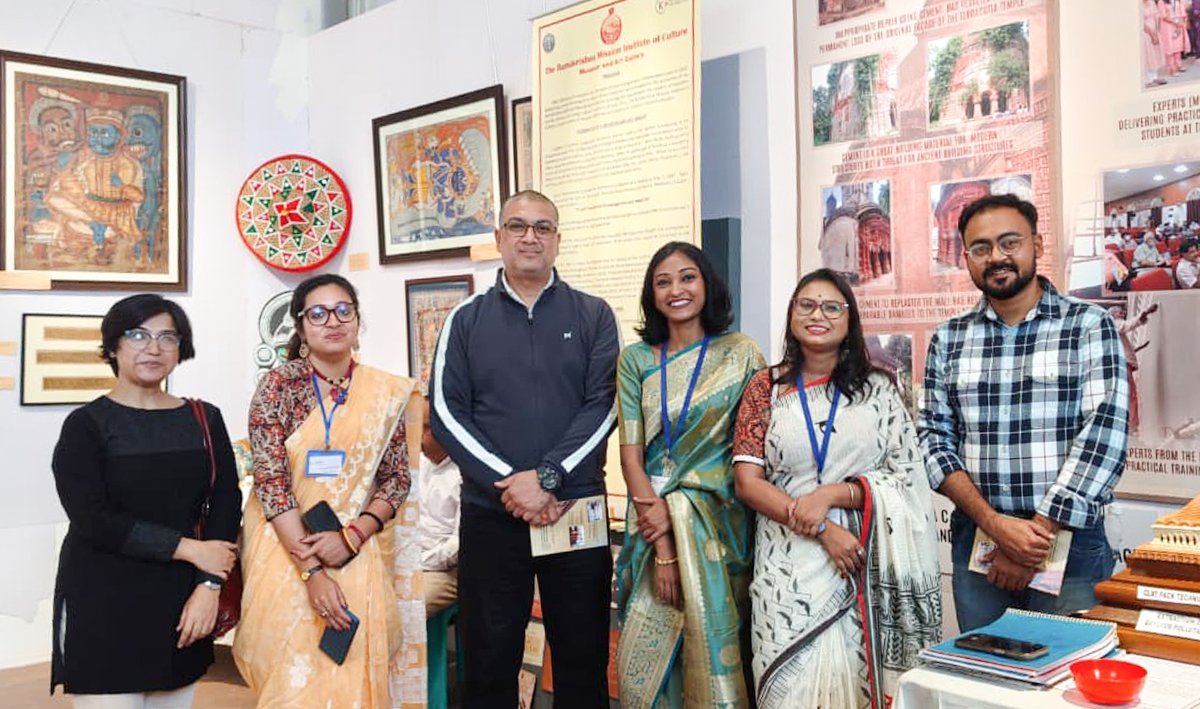
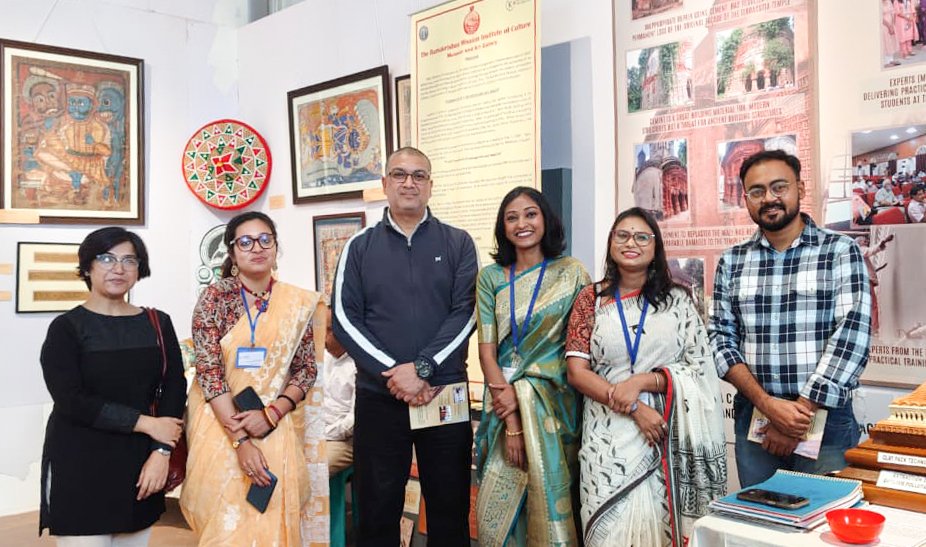
The AMI Festival at the Indian Museum, Kolkata beautifully brings rural India into the heart of the city. Walking through the exhibition feels like stepping into a living archive of village life — from terracotta traditions and folk paintings to everyday tools, stories, and songs that have shaped generations.
Curated with warmth and sincerity, the festival creates a shared space where artisans, researchers, museum professionals, and visitors connect deeply with India’s rural heritage. Here, heritage isn’t just displayed — it is felt, heard, and celebrated.
Every object carries a community’s memory, every performance echoes the rhythm of village life, and every exchange bridges the distance between our rural roots and the urban world.
This year, IHAR proudly participated with three representatives.
Our member Mouli Roy collaborated from Devalgarh Museum, while Nabanita Ghoshal and Ronita Mondal represented Team REACH Foundation, Kolkata, engaging with visitors on the urgent need to conserve historic buildings and safeguard cultural heritage.
Adding to this spirit of collaboration, IHAR Director-Operations Sri Surya Sarathi Roy and IHAR Digital Media Incharge Suprabho Roy, accompanied by Suchira Nandi Purkayastha, Journalist, The Times of India, visited the ongoing festival and warmly appreciated the dedicated efforts of our fellow members.
Our presence reinforced a collective message: heritage survives only when communities, institutions, and individuals work together to protect it.
AMI is a powerful reminder that heritage is not a relic of the past —
it is a living, breathing legacy shaped by people, preserved with care, and enriched when shared.
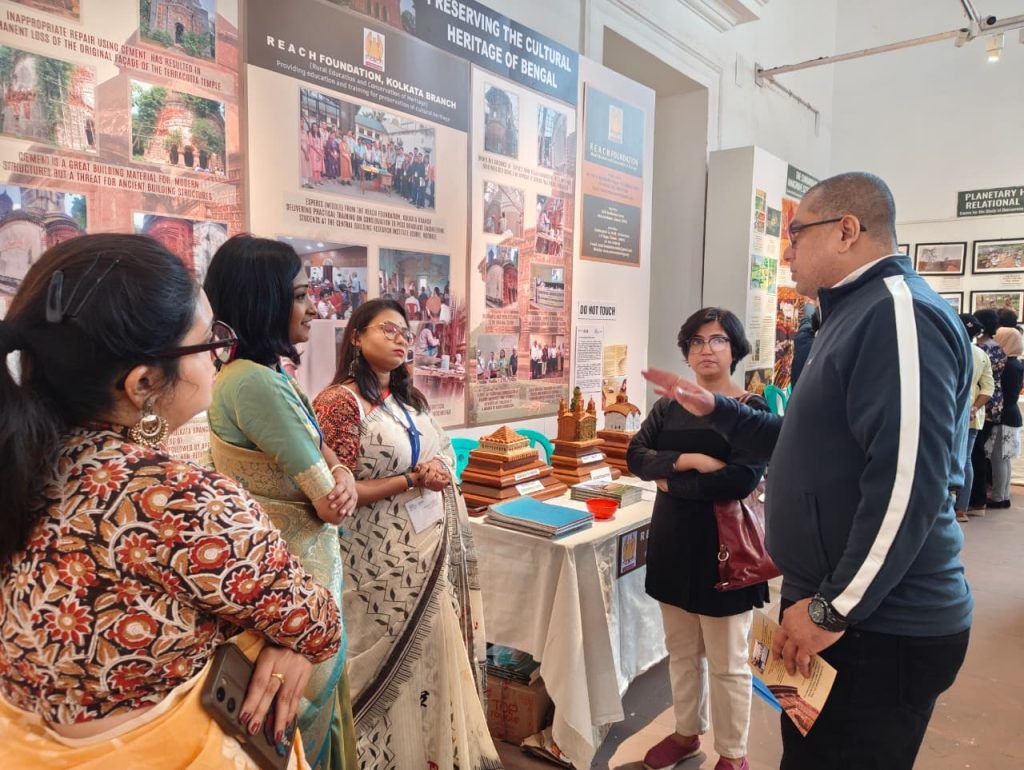
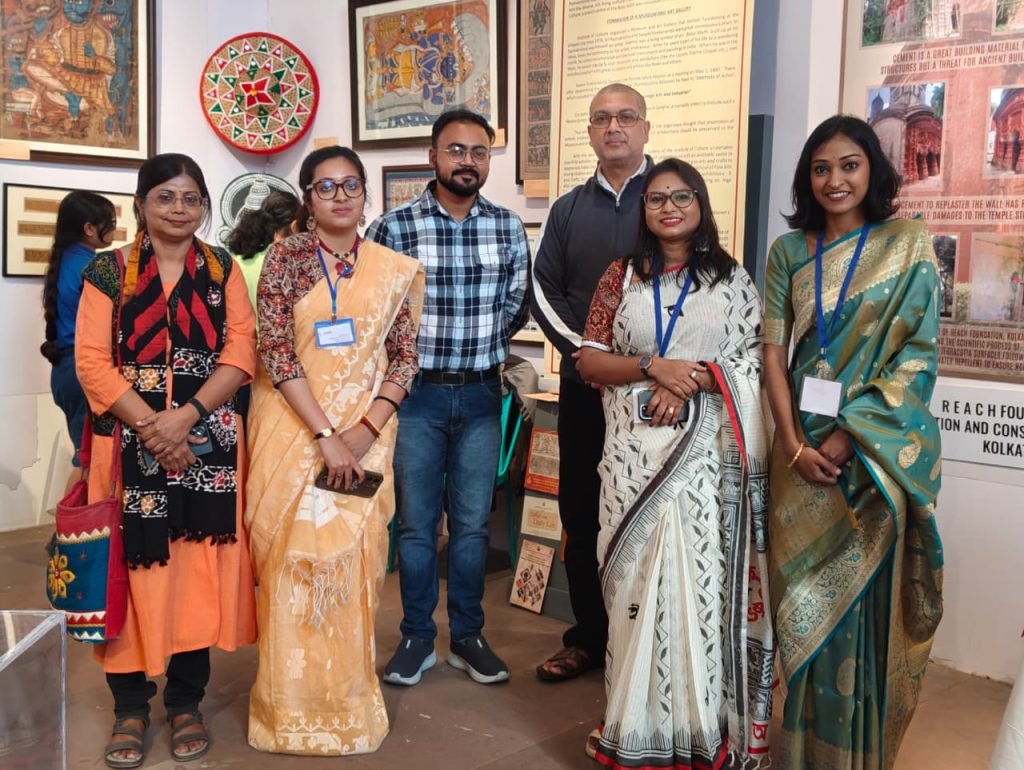
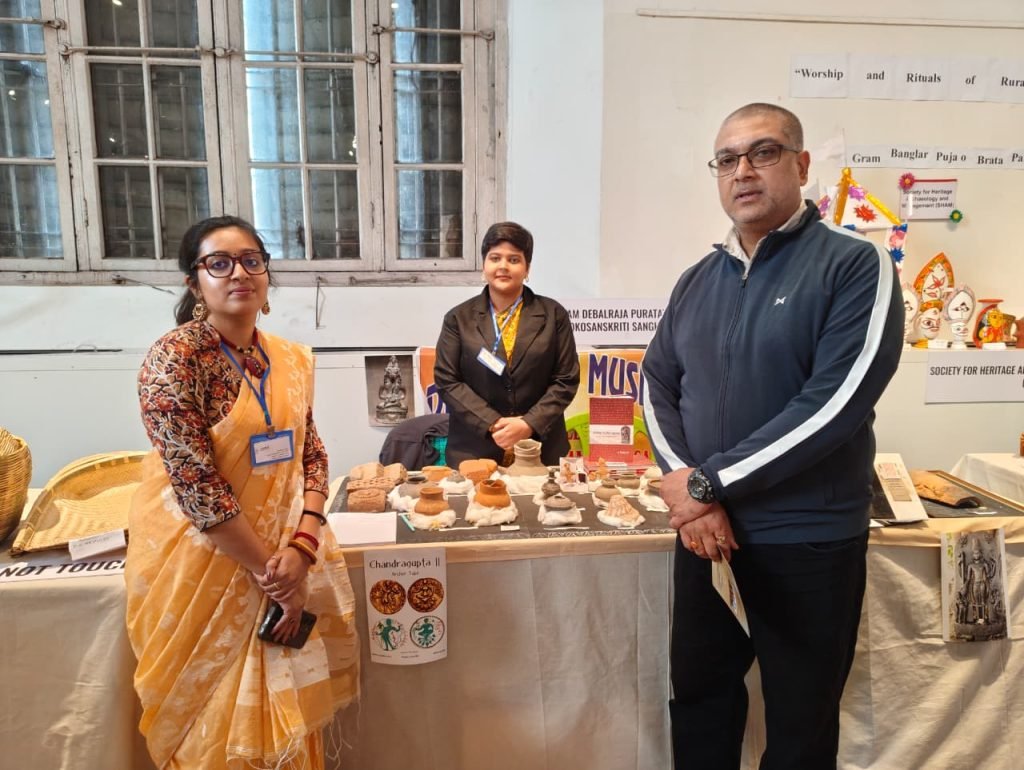
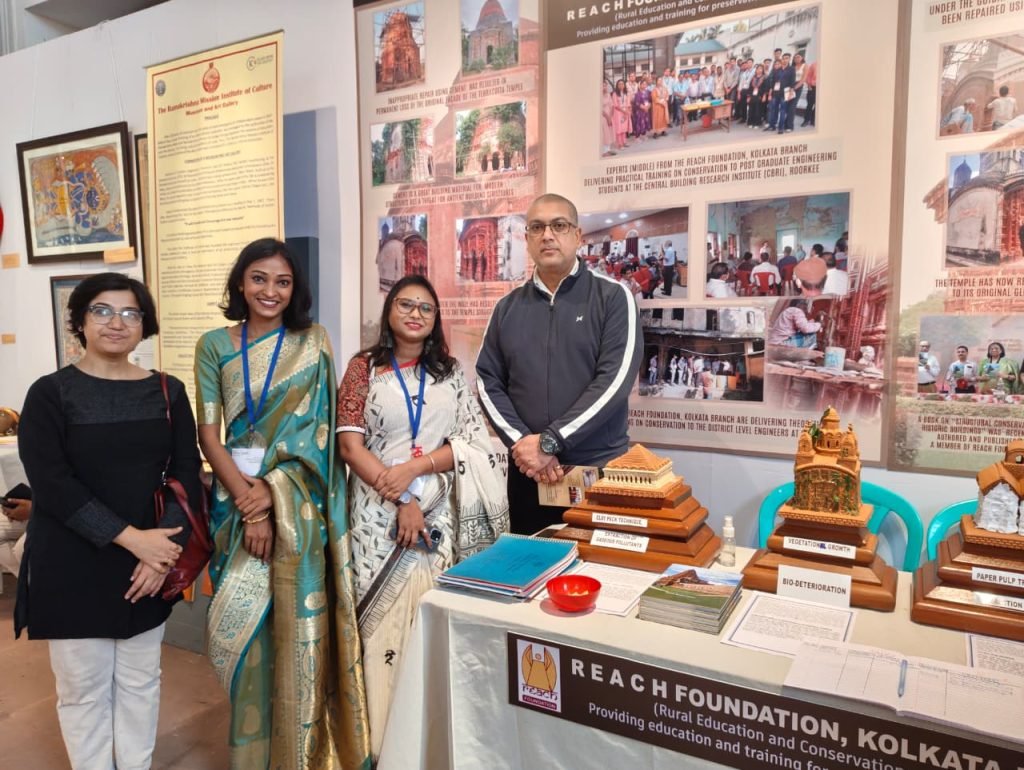
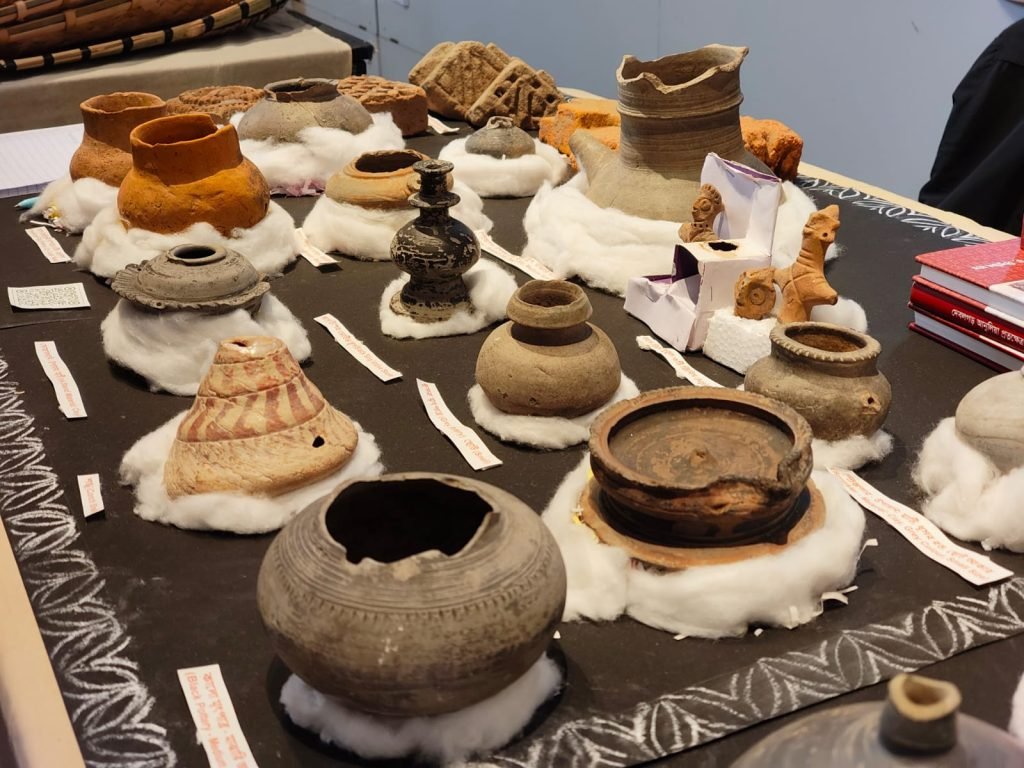
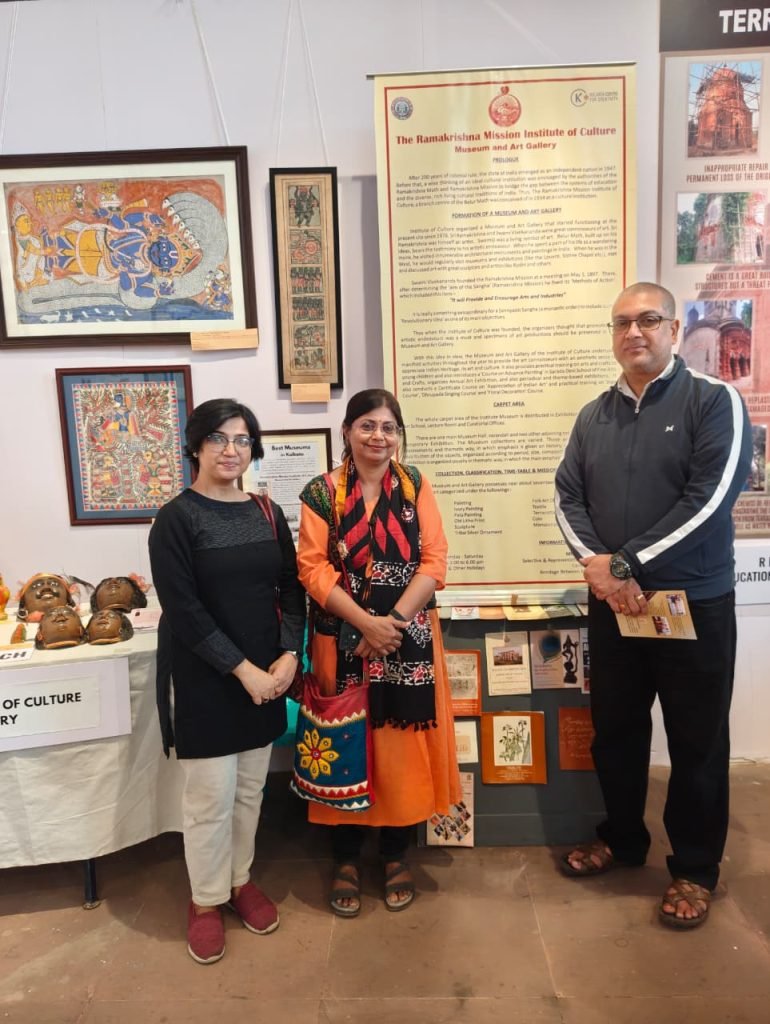
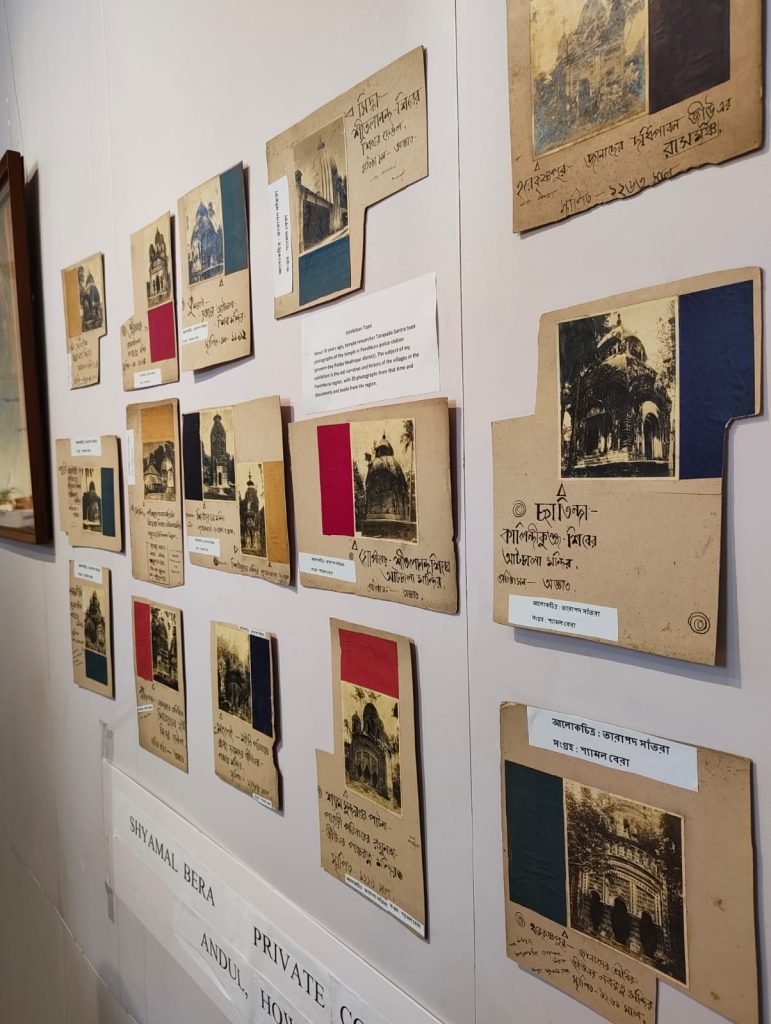
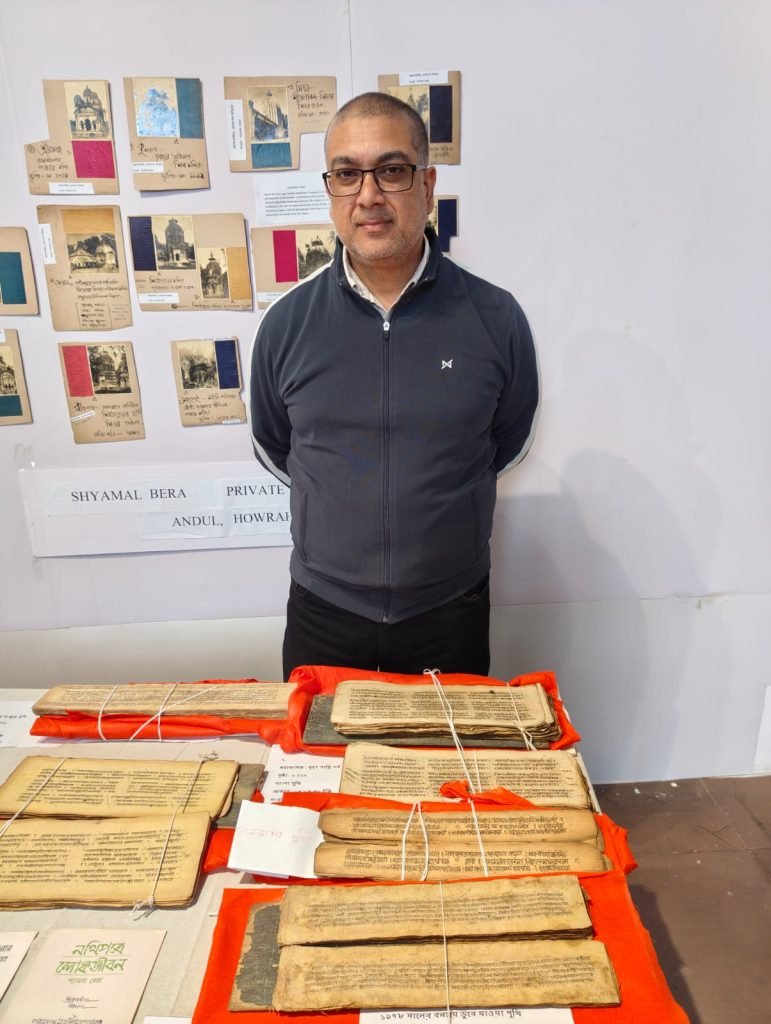
articles
CARVING CONTINUITIES: THE LIVING HERITAGE OF SOAPSTONE ARTISANS
Published
1 month agoon
November 5, 2025By
Suprabho Roy
Soapstone carving is a remarkable craft whose origins stretch back to some of the earliest civilizations in India. Today, this artistic tradition continues among communities whose heritage and skills have been passed down for many generations.
Historical Roots
Soapstone, a metamorphic rock primarily composed of talc, has been used in the Indian subcontinent since the days of the Indus-Saraswati Civilization and the Chalcolithic period. Its historical significance is evident in ancient sites where artifacts such as seals, beads, statues, and small figurines have been found. Key archaeological discoveries, like steatite ringstones from the Shunga-Maurya period and sculptures from the Gupta era, illustrate soapstone’s profound role throughout history. The artistry of temple construction, as seen in Khajuraho, Jabalpur, and Udaipur, is just one facet of the stone’s legacy, with temple artisans employing techniques and tools that are still in use by contemporary soapstone carvers.
Community and Continuity
Carving skills within artisan communities—particularly the Silawat and Vishwakarma—are shared orally and inherited over generations, often spanning four to five generations. Despite the richness of these traditions, written documentation remains scattered and incomplete, making oral testimonies vital in preserving the craft’s continuity. Migration patterns have also contributed to the dispersion and evolution of carving techniques among artisans.
Diversity of Soapstone Craft
The types of sculptures crafted by soapstone artisans are diverse, shaped by regional demands and socio-economic conditions. These range from modern decorative pieces to ritualistic art:
– In Jabalpur (Madhya Pradesh), artisans produce devotional and decorative items such as cookware, toys, and showpieces, with motifs including Shivlings, demigods, elephants, and birds. Soapstone for these works is typically sourced from mines near Bhedaghat.
– The Jhabua-Alirajpur region is known for traditional Gaata sculptures crafted in a relief style, often created in memory of deceased males and worshipped with offerings. Local mines, as well as sources in Gujarat and Rajasthan, supply the necessary soapstone.
– Udaipur’s artisans have adapted to high tourist demand, blending traditional motifs with contemporary designs. Lord Ganesh idols, abstract human figures, and various souvenirs showcase the community’s ability to innovate while maintaining cultural resonance.
Methods and Techniques
Soapstone carving is a collaborative and systematic process :
– Artisans begin with the selection and cutting of raw soapstone using cutters.
– Shaping is performed with hammers and chisels to form the sculpture’s basic structure.
– Fine chisels refine features, while detailing is achieved with pointed tools for intricate patterns.
– Female artisans often smoothen the finished sculptures using sandpaper and water, ensuring a flawless texture.
– Final touches, such as polishing and coloring, are applied with waterproof primers, oil-based substances, or spray paints for gloss and durability.
Cultural Significance and Challenges
The living heritage of soapstone carving continues to hold deep cultural value, maintaining links between the artisans of central and western India since the Bronze Age. Knowledge is primarily transmitted orally, but today faces threats from the rise of mechanization and waning interest among younger generations. Seasonal changes in tourism and market access impact sales, though affordable raw material provides some relief.
The Way Forward
There is an urgent need to recognize, support, and safeguard soapstone artisans to preserve this craft for future generations. Without such efforts, a vital aspect of India’s creative and spiritual history risks fading away. By understanding and promoting the work of these artisans, society can ensure the survival of this unique and profound tradition.
articles
CONSTRUCTING GENDER IDENTITIES IN DEATH : RETHINKING MORTUARY ARCHAEOLOGY THROUGH THE EVIDENCE OF SINAULI
Published
1 month agoon
October 30, 2025By
Suprabho Roy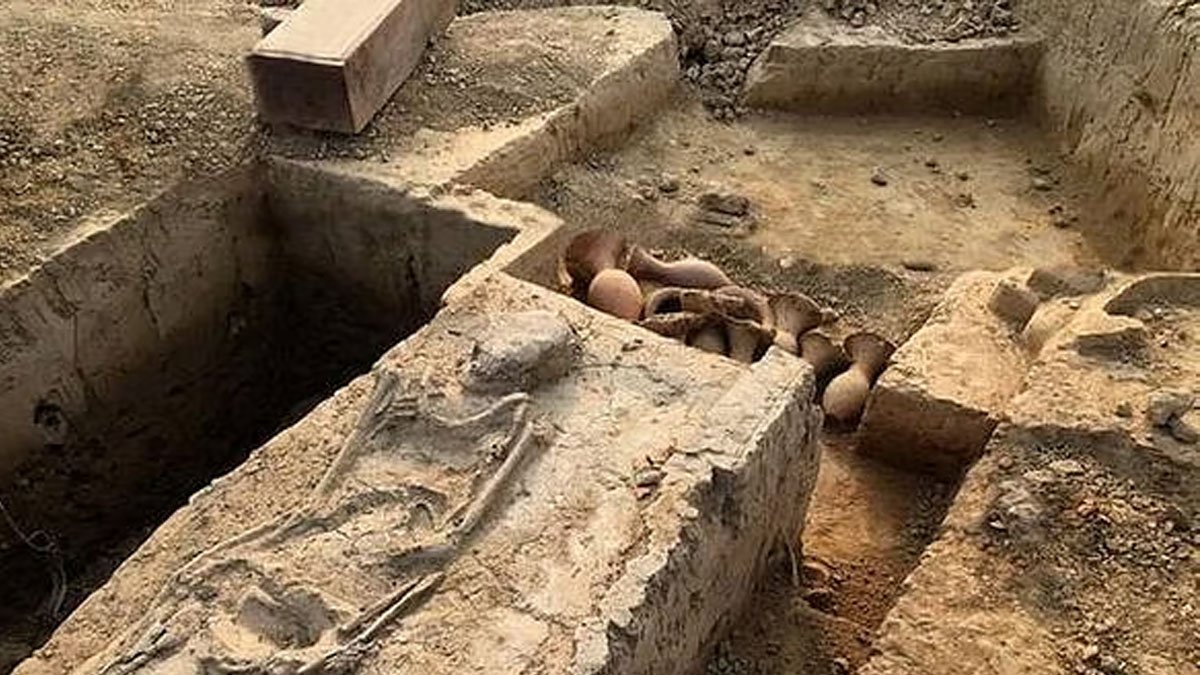
The archaeological site at Sinauli in Uttar Pradesh has provided significant insight into ancient burial practices, gender identities, and social hierarchy in South Asia. The evidence uncovered at Sinauli challenges long-held assumptions and offers fresh perspectives on mortality, gender roles, and elite status in ancient Indian society.
Location and Historical Context
Sinauli is situated in the Baghpat district of western Uttar Pradesh, lying within the fertile Upper Ganga-Yamuna Doab region. It is associated with the Ochre Coloured Pottery (OCP) culture, which dates back to the early second millennium BCE. This site gained attention due to its unique burial practices, especially those involving women and the material assemblages found with their graves.
Overview of Excavations
The Sinauli excavations were initiated in 2005 under archaeologist D.V. Sharma, and further work was conducted in 2018 by Dr. Sanjay Manjul. In 2005, archaeologists uncovered 116 burials, typically oriented north-south, along with ochre-colored pottery. The 2018 excavations revealed even greater complexity, including wooden coffins adorned with copper sheets, rectangular boxes, antenna swords, helmets, shields, pots, and controversial wheeled vehicles—leading to a debate over whether these were chariots or carts.
Types of Burials
Sinauli yielded four primary burial types:
– Symbolic burials without skeletons.
– Primary burials with full skeletons.
– Secondary or fragmented burials.
– Multiple burials containing fragmented remains.
Gender Distinctions in Burial Practices
A significant contribution of Sinauli is its challenge to conventional views on gender and mortuary archaeology. Certain burials, notably those identified by Asko Parpola, show that elite women were sometimes interred in richly decorated coffins with martial symbols such as swords, shields, and wheeled vehicles. Coffins for women featured steatite inlay and were often covered, in contrast to men’s coffins, which generally had copper sheathing and were left uncovered. Such differentiation suggests elaborate symbolism surrounding gender and possibly ritual seclusion or heightened sacredness for women in death.
One highly debated aspect is the absence of feet in Burial-1, which might suggest less earthly mobility or represent a transformation from earthly to transcendent status.
Rethinking Weaponry and Gender
The presence of weapons, such as copper antenna swords and shields, in women’s graves at Sinauli has prompted scholars to reconsider rigid notions of gender roles. These martial objects could signal the dead’s authority—either as warriors or ritual leaders—thus broadening our understanding of gender within ancient funerary contexts. Interestingly, such elaborate martial symbolism is less prevalent in the male burials at Sinauli.
Symbolism of Coffins and Elite Status
Coffins at Sinauli, rare in South Asian archaeology, were more than mere containers; they symbolically transformed the deceased into sacred beings. Their intricate decoration reflects considerable labor, resources, and craftsmanship, indicating elite status and the possibility of gendered authority within the social hierarchy.
Conclusions and Implications
The burial evidence from Sinauli emphasizes material distinctions that reveal social stratification, hierarchy, and constructed gender roles. While the idea of women warriors remains debated, the presence of martial symbols with elite women points towards complex rituals and conceptions of social power in death. Sinauli thus stands out as a crucial site for rethinking gender identities, social class, and the symbolic aspects of funerary practices in ancient India.

Team IHAR at the AMI Festival held in the Indian Museum, Kolkata

CARVING CONTINUITIES: THE LIVING HERITAGE OF SOAPSTONE ARTISANS

CONSTRUCTING GENDER IDENTITIES IN DEATH : RETHINKING MORTUARY ARCHAEOLOGY THROUGH THE EVIDENCE OF SINAULI

Rediscovering Sutanuti: IHAR WB CHAPTER’S Second Heritage Walk

Preserving Bengal’s Intellectual Legacy: IHAR West Bengal Chapter Undertakes Detailed Survey of Uttarpara Joykrishna Mukherjee Public Library

Bharat Varsh – A Cradle of Civilzation – Panel Discussion

Bringing our Gods back home – A Conversation with Shri Vijay Kumar

Panel Discussion on Sati

Bengal’s Glorious and Diverse Heritage- Traditions and Festivals – Panel Discussion

Panel Discussion: Heritage of Firebrand Revolutionaries – Bengal The Seedbed of Revolution

Debugging the wrong historical narratives – Vedveery Arya – Exclusive podcast

The Untold History Of Ancient India – A Scientific Narration

Some new evidence in Veda Shakhas about their Epoch by Shri Mrugendra Vinod ji

West Bengal’s textbooks must reflect true heritage – Sahana Singh at webinar ‘Vision Bengal’

Bringing our Gods back home – A Conversation with Shri Vijay Kumar
Trending
-

 Events2 years ago
Events2 years agoBharat Varsh – A Cradle of Civilzation – Panel Discussion
-

 Videos3 years ago
Videos3 years agoBringing our Gods back home – A Conversation with Shri Vijay Kumar
-

 Videos11 years ago
Videos11 years agoPanel Discussion on Sati
-

 Events8 months ago
Events8 months agoBengal’s Glorious and Diverse Heritage- Traditions and Festivals – Panel Discussion
-

 Events7 months ago
Events7 months agoPanel Discussion: Heritage of Firebrand Revolutionaries – Bengal The Seedbed of Revolution

